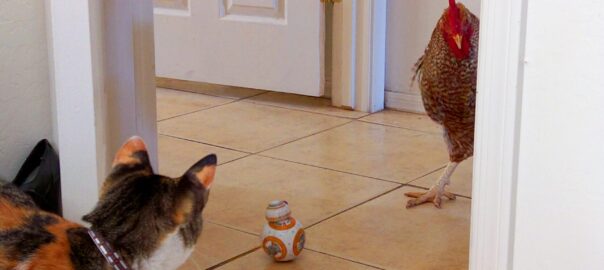By: Russell Carr
“The online conference surpassed my expectations.”
Writers need community. We read each other’s work, give feedback, and help each other grow. It’s also nice to know there’s someone else out there struggling alone at a desk, holding you in mind. Many people find such communities at writers’ conferences, so much so that there are hundreds throughout the country. I enjoy them because I usually receive the best feedback on my short stories and personal essays within conference workshops, and I also gain friendships with fellow writers. Even though I’m usually shy around people I don’t know, I always enjoy mingling with a crowd of writers. They get what I love to do. Conferences also give me the opportunity to hear lectures from leading writers and educators. By the end of a long weekend or week, I leave tired but motivated. At the beginning of 2020, I planned to attend at least two writers’ conferences during the upcoming year. But by late February, COVID-19 changed my plans. I’d like to share my experiences with a few conferences, without naming names, during this time of social distancing and cancelled gatherings, and offer some lessons learned that might help you decide whether to attend one in the age of Zoom.
In the before times, 2019, one of my friends attended a writers’ conference and loved it. She encouraged all of our mutual writer friends to apply for the conference in 2020. Most, if not all, of us who applied were accepted into it. We joked about a conference takeover, but our goals were really so see each other in person again and to learn from other writers.
Then the pandemic hit. The conference was to be in the May. In March, the organizers held out hope to still have it, but soon many states were shutting down. They cancelled the conference, with the plan to return in 2021. Of course, we were all disappointed, but understood. At that same time, schools that had shut down were scrambling to figure out how to continue. Zoom was just beginning to be used for classes. Understandably, the conference didn’t want to enter that experiment so soon after the pandemic struck. We all hoped to attend next year.
I’d also signed up for a summer writers’ conference separate from the one with my friends. I’d discovered it the prior summer. Then, it had been a nice adventure. It was about an eight-hour drive from my home, so that meant ten days without the usual work and home responsibilities, which my wife supported (Thanks again, Liza!). Being there without any friends meant I made many new ones. There were the conference regulars, some of them having attended ten or more summers and joked that it was their adult summer camp. There were other first-timers like myself and those in between. And then there were the faculty and staff who were very friendly and approachable. What I liked about it was just how laid back everyone who attended or taught at it was. I ate with different people every day. I stayed in a dorm, single room, and within a few days, I was having scotch every evening with a new friend there. During the day, I attended great lectures and readings, discussed them with new friends, and received great feedback on my own writing in workshops. By the end of the ten days, I knew I would return for more in 2020.
After the first conference I’d planned to attend with my friends was cancelled, I feared my summer plans were lost also. But even as the early struggles with transitioning to online meetings and school continued across the country, the summer conference organizers announced that they wanted to try an online version. Watching the troubles my son was having with online school, I was skeptical. But I decided it was worth trying, at least to get the workshop experience and lectures. I was nervous as the first day it approached. I didn’t like the idea of my experience depending upon my technology skills or the whims of my broadband.
The online conference surpassed my expectations, but it wasn’t the same as in person. The organizers did a great job getting the technology set up and sending out explanations about accessing each activity. My workshop was outstanding, among the best I’ve participated in. All of us did accidentally interrupt each other at times, but we were sensitive to that risk with Zoom and allowed for it. Occasionally, connections froze, but that didn’t stop the overall momentum that the workshop leader established and continued through hours of discussion. She told us that she’d led a workshop with Zoom through an MFA program’s summer residency a few weeks earlier, and her experience showed. The lectures were also great, and there was the added perk that I could turn off my camera. Then I could stand up, walk around, check my phone, but still listen and not distract anyone.
But there were some limits that no one could change. The conference tried to encourage participants and staff to hang out after hours in Zoom meeting rooms. People did, but, with the limits of online technology, only one person could speak at a time. If there was someone I wanted to talk with individually, I could reach out through private chat, or leave the group meeting room and call him or her directly. Also, I missed the meals with random participants and instructors. So, outside of workshop, it was difficult to make new friends. And because of limited ability to have individual conversations, I don’t know nearly as much about the people I did meet: their opinions they won’t share in a group, how they stand while they talk, what they like to drink or eat, or even their heights. All the body language. We connected, but didn’t.
As the pandemic continues, we all have to take what we can get when it comes to social interactions. Fortunately, everyone is learning more about using online opportunities and how to adapt them to our expectations and needs. I encourage you to continue to seek out connections through those writers’ conferences that are still happening, even if you don’t leave your desk to attend them. Online conferences also offer new opportunities. With so many of them moving to an online format, this can be an excellent time to attend ones that have been too far away, such as overseas or ones on the opposite coast of America from you. Their online versions are also cheaper, since they don’t have to include room and board.
Some things to look for, in my opinion, are how the organizers plan to conduct online workshops and lectures. Will the groups for workshops be smaller than their prior in person ones, for instance, so all participants can talk more easily in them? Do the organizers have experience with online programs, such as also participating in MFA programs? Lectures can still happen in large groups, but beware of ones that are described as large discussion groups, panels, or question and answer sessions. Those can prove very difficult to participate in. Will the times fit with your schedule, including a difference in time zones? The conference might start late or early to accommodate time zone differences. Will there be breaks between events? I found that I needed more time away from the computer screen than I needed between in-person sessions. If the conferences is still meeting in person, which I don’t recommend, how do they plan to implement safety precautions? How does that change room and board for the conference?
While we all wait as the vaccines are being distributed, I hope to meet you at an online conference!

Russell Carr is a psychiatrist and psychoanalyst in private practice in Maryland. He has a BA in Russian Literature from UNC at Chapel Hill, an MD from the University of Tennessee, and an MFA from Converse College. He recently retired from the United States Navy after twenty years of service. He was the review editor for South 85 Journal for two years, and currently serves as the journal’s fiction editor.










